Selected from 60,000+ entries, take an exclusive sneak peek at powerful images from the Wildlife Photographer of the Year 2025 competition
Get an early glimpse at the stories, techniques, and gear decisions behind some of the year's most striking wildlife photographs

Your exclusive first look at the 2025 Wildlife Photographer of the Year competition is here. Now in its 61st year, this world-renowned competition, developed and produced by the Natural History Museum, London, has once again brought together the most striking, moving, and unforgettable images of wildlife from across the globe.
Selected from 60,636 entries across 113 countries and territories, the images you're about to discover were chosen by an international panel of experts in wildlife photography, conservation, science, and filmmaking.
Each shot tells a story – of survival, resilience, and connection, and offers us a window into the often hidden lives of wild animals and the fragile ecosystems they call home.
While the 19 category winners and the overall title of Wildlife Photographer of the Year 2025 will be officially revealed during a special ceremony at the Natural History Museum in London on 14 October – hosted by renowned conservationists Chris Packham and Megan McCubbin – we're giving you an early glimpse at some of the most highly commended images.
These standout photographs will join a total of 100 selected images in the Wildlife Photographer of the Year exhibition, opening to the public on 17 October, at the Natural History Museum.
So let's dive into some of the most powerful entries – and see which of these standout shots might just take home the ultimate Grand Title and Young Grand Title.
The ceremony will be available to watch live on the Natural History Museum's YouTube channel. You can find more information about the competition here.
The best camera deals, reviews, product advice, and unmissable photography news, direct to your inbox!
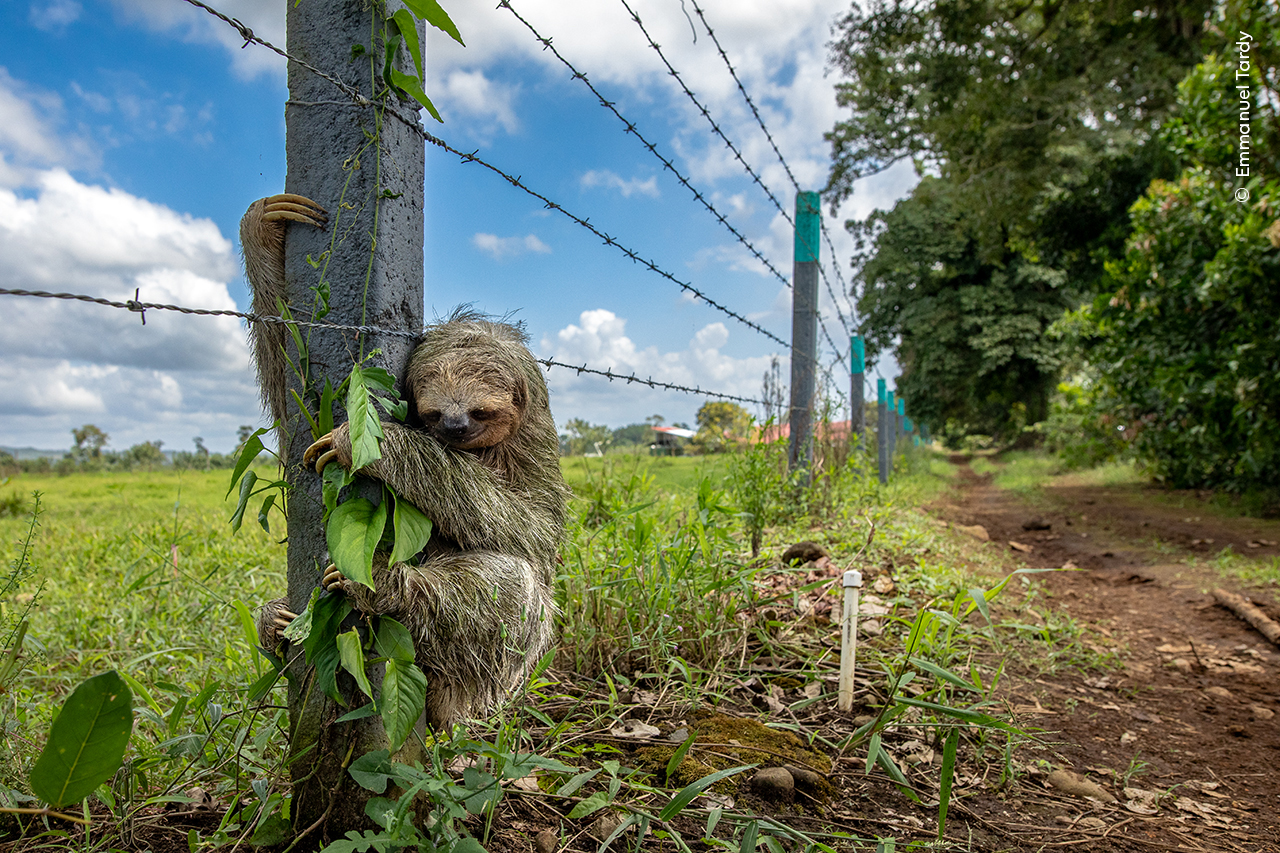
No Place Like Home by Emmanuel Tardy, France
Highly Commended, Urban Wildlife
Traffic slowed to a crawl as this sloth crossed the road, eventually reaching a fence post and gripping firmly. Concerned about not adding to the animal’s stress, Emmanuel patiently waited for people to leave the area before quickly taking this photo. As their habitats become increasingly fragmented, sloths are forced to make more ground crossings to reach the safety of the next tree. In response, the Costa Rican government is working with local NGOs to establish biological corridors, including aerial bridges that reconnect their forest homes.
Location: El Tanque, San Carlos, Alajuela, Costa Rica
Technical details: Canon EOS 5D Mark IV + Sigma 24mm f/1.4 lens; 1/1600 at f/7.1 (+0.33 e/v); ISO 800
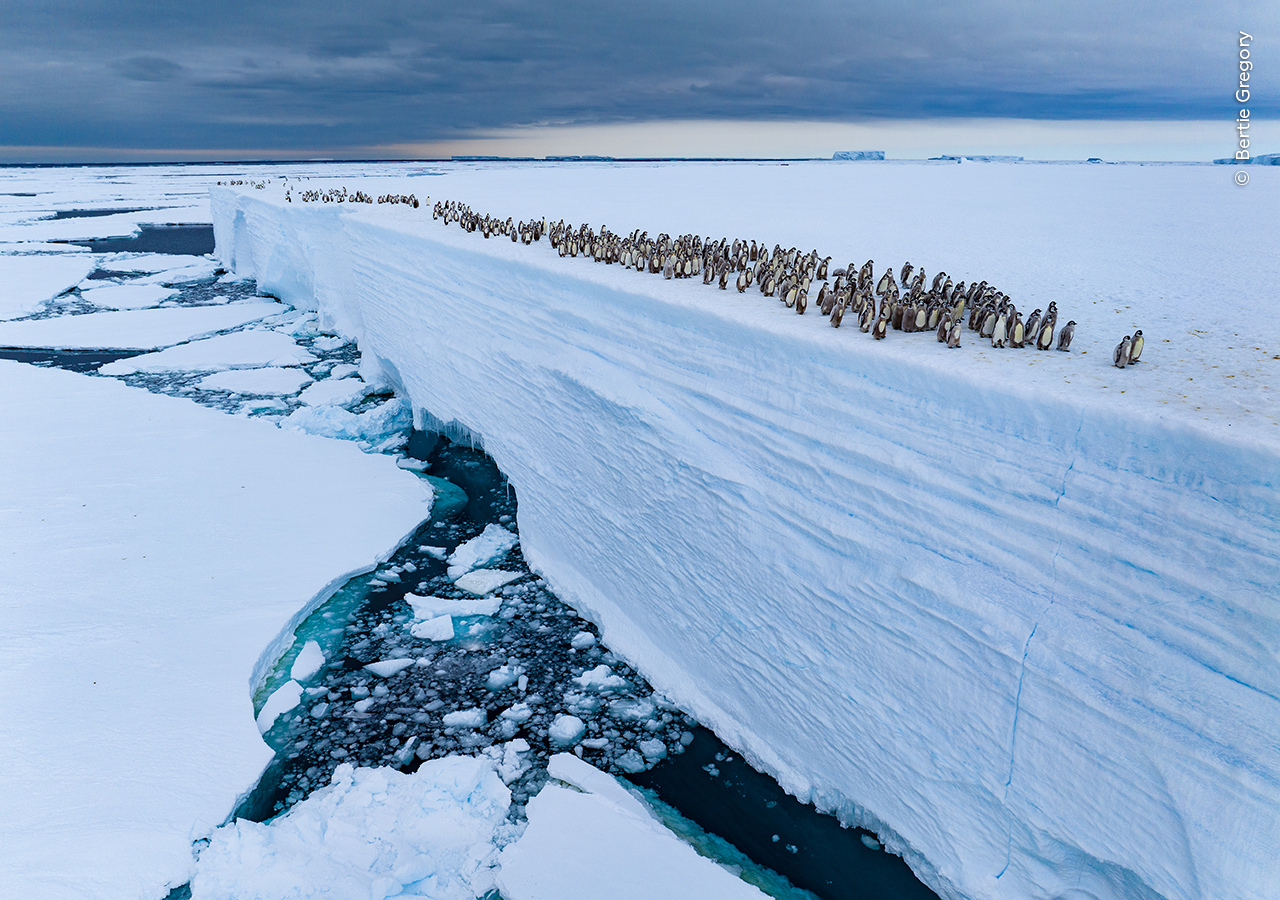
Ice Edge Journey by Bertie Gregory, UK
Highly Commended, Animals in their Environment
Bertie spent two months with the penguin colony and witnessed most chicks using ice ramps to descend to sea level for food. But this group missed the easy way down. Keeping his drone at a safe distance, he watched as they took a 15-metre (49-foot) leap into the water.
Left to fend for themselves, emperor penguin chicks must find a way to make their first dip into the icy ocean to find food. Scientists believe the continued decline of sea ice in Antarctica may force more penguins to breed on ice shelves, making this behaviour increasingly common in the future.
Location: Ekström Ice Shelf, Atka Bay, Antarctica
Technical details: DJI Mavic 3 Pro + Hasselblad L2D-20c 24mm f/2.8 lens; 1/50 at f/3.5; ISO 100
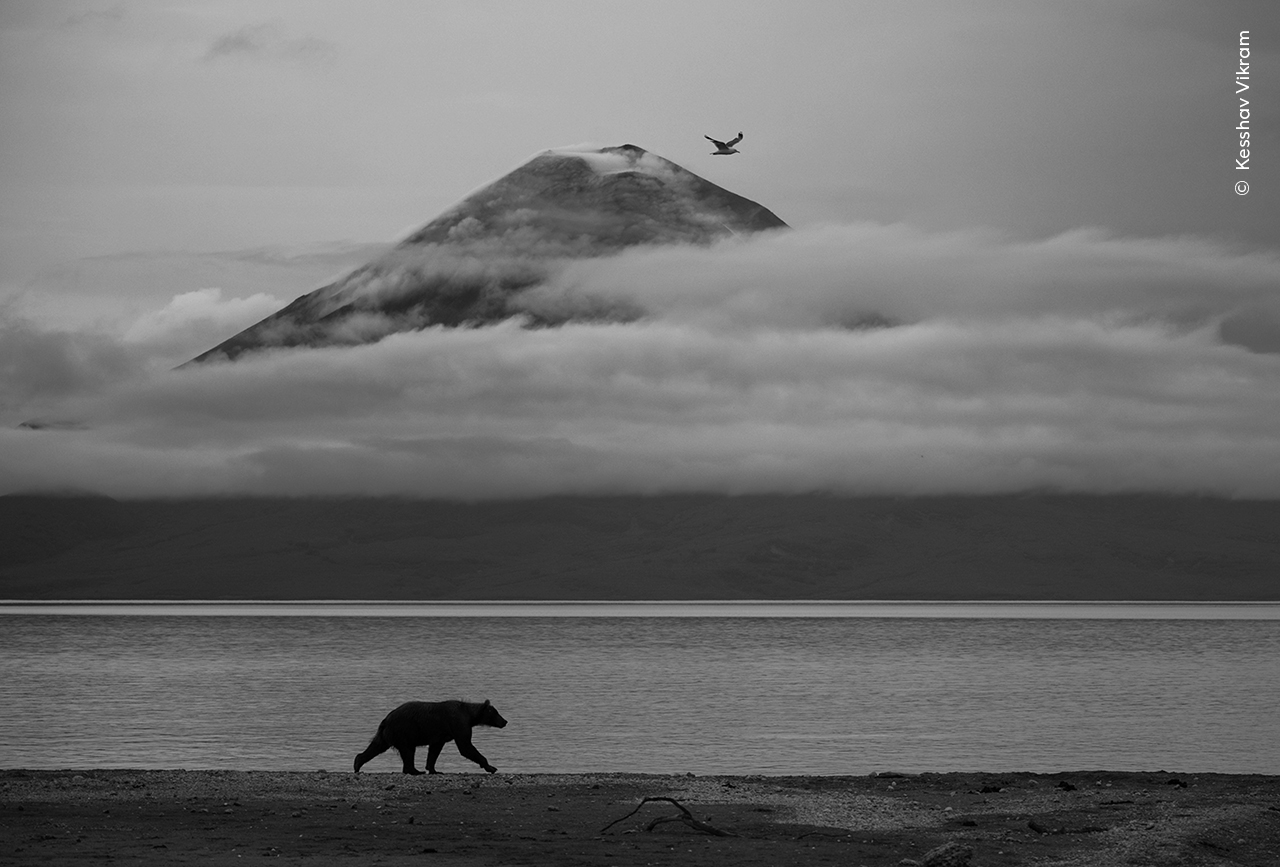
Essence of Kamchatka by Kesshav Vikram, India
Highly Commended, 11–14 Years
Kesshav waited days for this image to come together: a brown bear strolling along the shore of Kurile Lake as the Iliinsky volcano emerged from the clouds. A slaty-backed gull flew past, aligned with the volcano’s summit.
Generally solitary, the bear was heading to feast with others on the glut of sockeye salmon migrating upriver to their origin lake to spawn. This caldera lake, formed in the crater made by a volcanic eruption, is the largest sockeye salmon spawning ground in Eurasia.
Location: Kurile Lake, Kamchatka Krai, Russia
Technical details: Nikon Z8 + 100–400mm f/4.5–5.6 lens at 100mm; 1/4000 at f/4.5 (+0.3 e/v); ISO 1000; beanbag
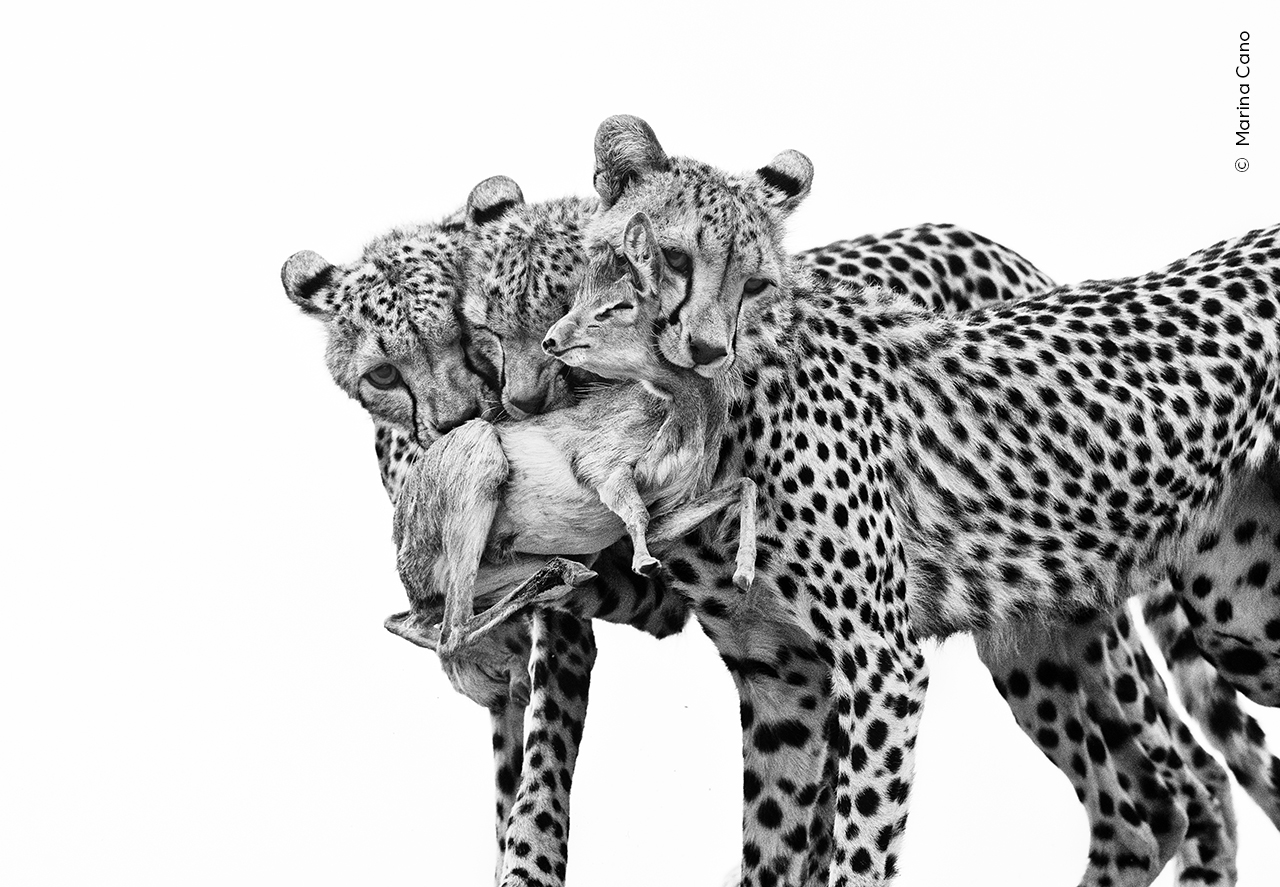
Deadly Lessons by Marina Cano, Spain
Highly Commended, Behaviour: Mammals
Marina watched the three young cheetahs practise their hunting skills while their mother looked on – a crucial stage in their journey to independence. The dik-dik was tossed into the air and killed just seconds after Marina took the photograph.
Cheetah cubs spend their first two months hidden in a lair while their mother hunts. At around a year old, they begin joining her, learning how to stalk and which prey to pursue.
Location: Samburu National Park, Samburu County, Kenya
Technical details: Canon EOS R3 + 600mm f/4 lens; 1/1250 at f8; ISO 6400
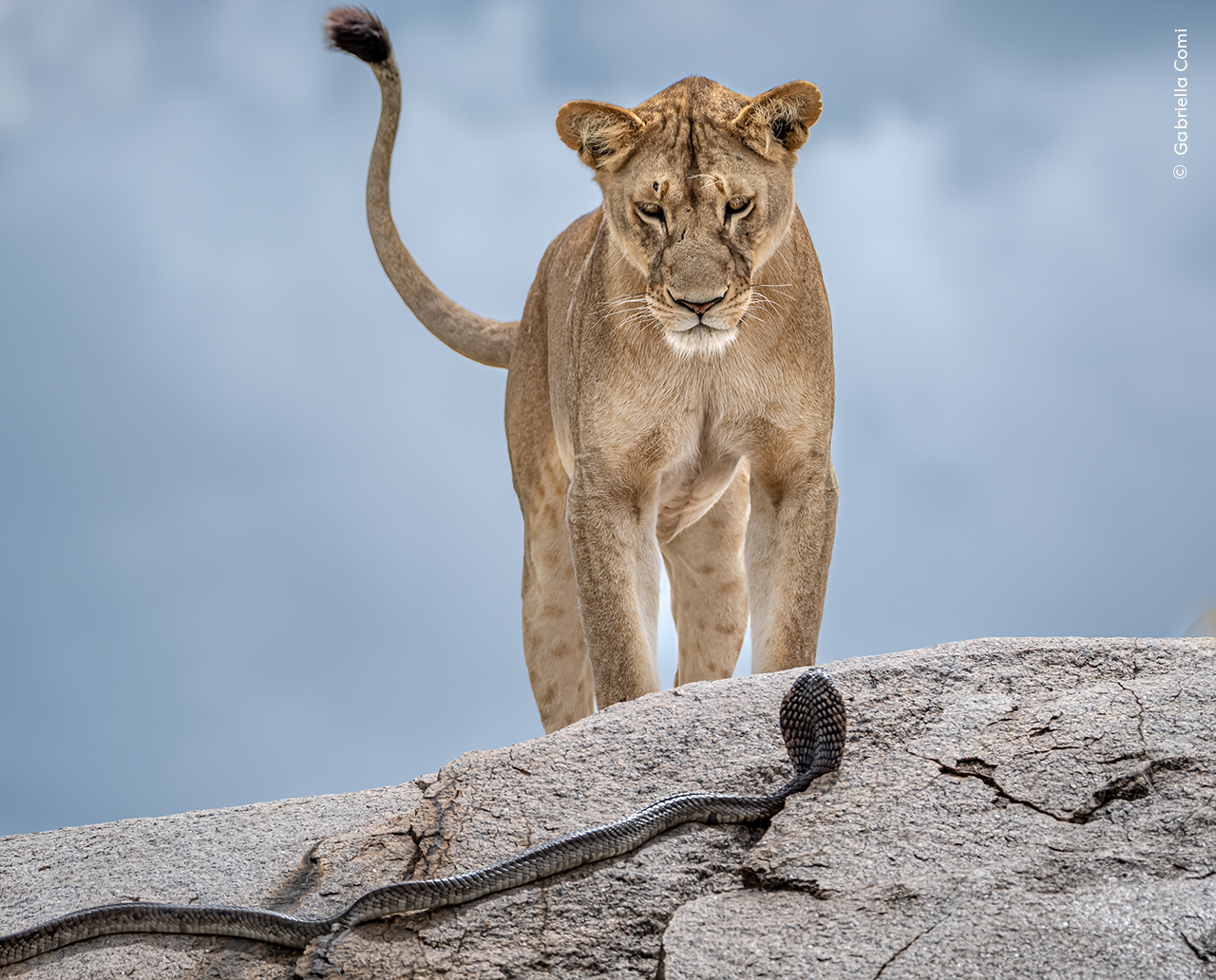
Wake-up Call by Gabriella Comi, Italy
Highly Commended, Behaviour: Mammals
Energy levels among the lions were low in the scorching midday sun. Gabriella and her guide, David, were about to move on when David spotted movement – a cobra was slithering towards two sleeping lions. Within seconds, the eldest of the pair was facing down the venomous intruder.
Tanzania’s Serengeti National Park is renowned for its large population of lions, with around 3,000 individuals living there. Lions are estimated to sleep for up to 20 hours a day to conserve energy.
Location: Serengeti National Park, Tanzania
Technical details: Fujifilm X-S10 + Tamron 150–500mm f/5–6.7 lens at 288mm; 1/1600 at f/5.6; ISO 250
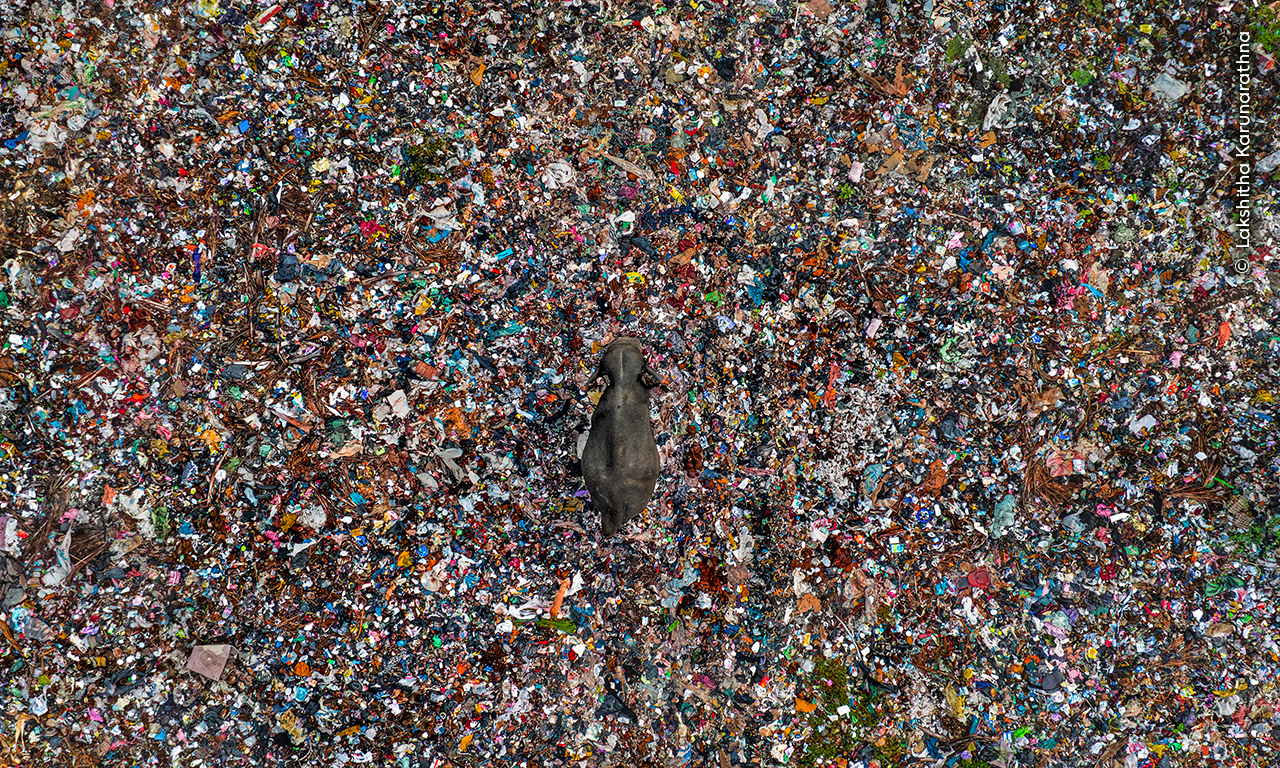
Toxic Tip by Lakshitha Karunarathna, Sri Lanka Highly
Commended, Photojournalism
For over three years, Lakshitha has documented human–elephant conflict in Sri Lanka. This image is the result of months of meticulous observation at two open rubbish tips, where herds regularly forage.
Around 20 elephants died over an eight-year period at a single site in Ampara after consuming indigestible food wrappers and other plastic waste. Alongside global efforts to reduce plastic use, conservationists stress the urgent need to secure landfills and prevent wildlife from accessing harmful materials.
Location: Ampara, Eastern Province, Sri Lanka
Technical details: DJI Mavic 3 Pro + Hasselblad L2D-20c 24mm f/2.8 lens; 1/320 at f/4 (0 e/v); ISO 200

Rutting Call by Jamie Smart, UK
Highly Commended, 10 Years and Under
Jamie walked up and down a path in the park at a safe distance from the stag. She stretched herself up tall to avoid any long grass in the foreground spoiling her view.
The stag’s antlers have regrown since their annual shedding in spring. The ‘velvet’ – the soft skin that covered them during their growth – has now rubbed off, exposing the bone beneath. Each new set grows larger and more complex as the stag matures, with more intricate points called tines crowning the heads of older males.
Location: Bradgate Park, Leicestershire, England, UK
Technical details: Nikon Z9 + 800mm f/6.3 lens; 1/800 at f/6.3; ISO 450
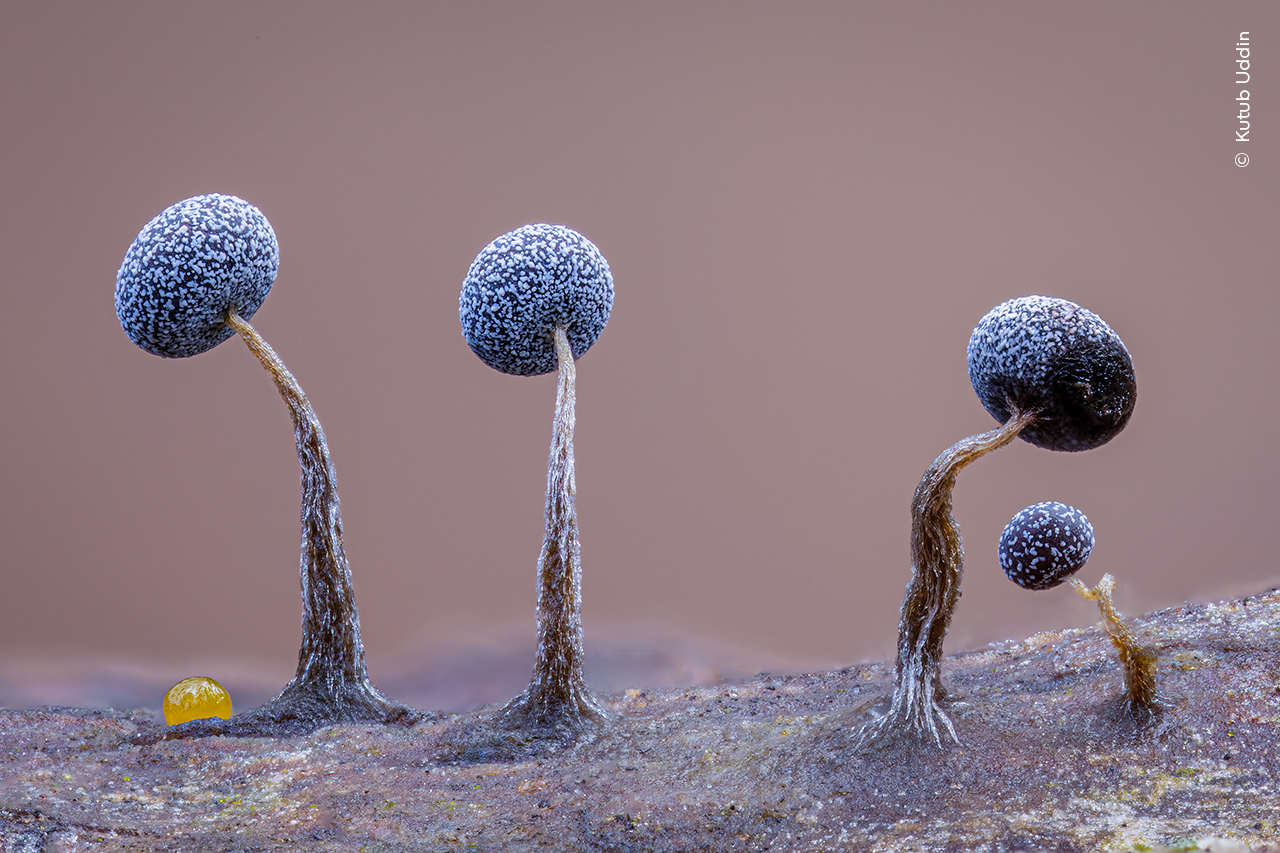
Slime Family Portrait by Kutub Uddin, Bangladesh/UK
Highly Commended, Natural Artistry
Kutub found these blueberry-like spheres – the reproductive parts of a slime mould, each just 1–2 millimetres in diameter – in a nearby forest. His image resembles a fantasy landscape, though he describes the scene as a ‘bizarre family portrait’, complete with a tiny yellow insect egg.
A slime mould is a community of mobile single-celled, amoeba-like organisms that live independently until they come together and work as one to find food and reproduce.
Location: Slindon Wood, West Sussex, England, UK
Technical details: Canon EOS R5 + 65mm f/2.8 1–5x macro lens; 0.6 at f/5.6; ISO 200; focus stack of 78 images
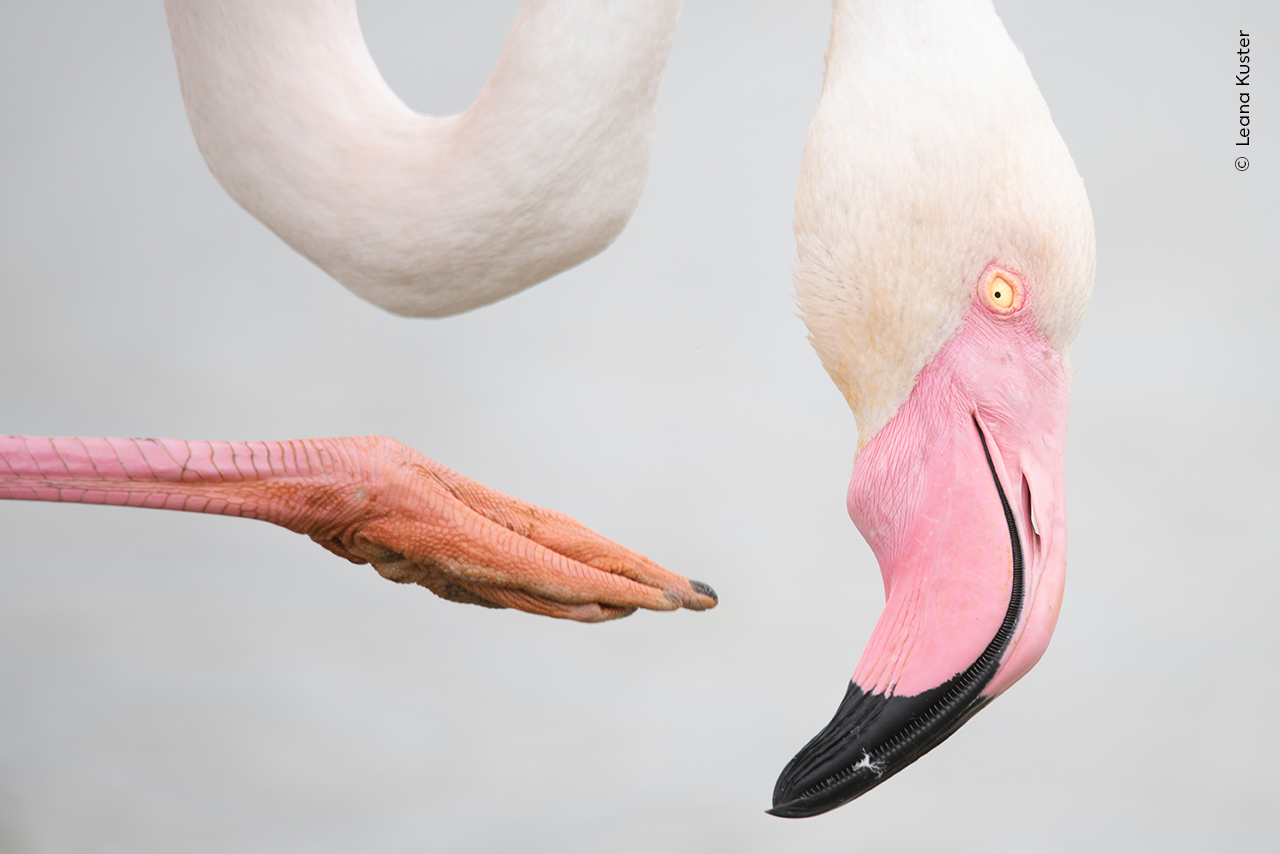
Pink Pose by Leana Kuster, Switzerland
Highly Commended, 15 – 17 Years
While on holiday in southern France, Leana had been watching flamingos in the Camargue. She was fascinated by their foraging behaviour as they moved gracefully through the shallow, saline wetlands, filter feeding for molluscs and crustaceans.
Flamingos use their tongues to force water through their specially adapted bills, which are lined with many rows of fine, comb-like plates. These help trap a species of brine shrimp called Artemia salina that gives the birds their famous pink hue.
Location: Pont de Gau, Camargue, France
Technical details: Nikon D810 + Tamron 150–600mm f/5.6 lens; 1/500 at f/6.3; ISO 250
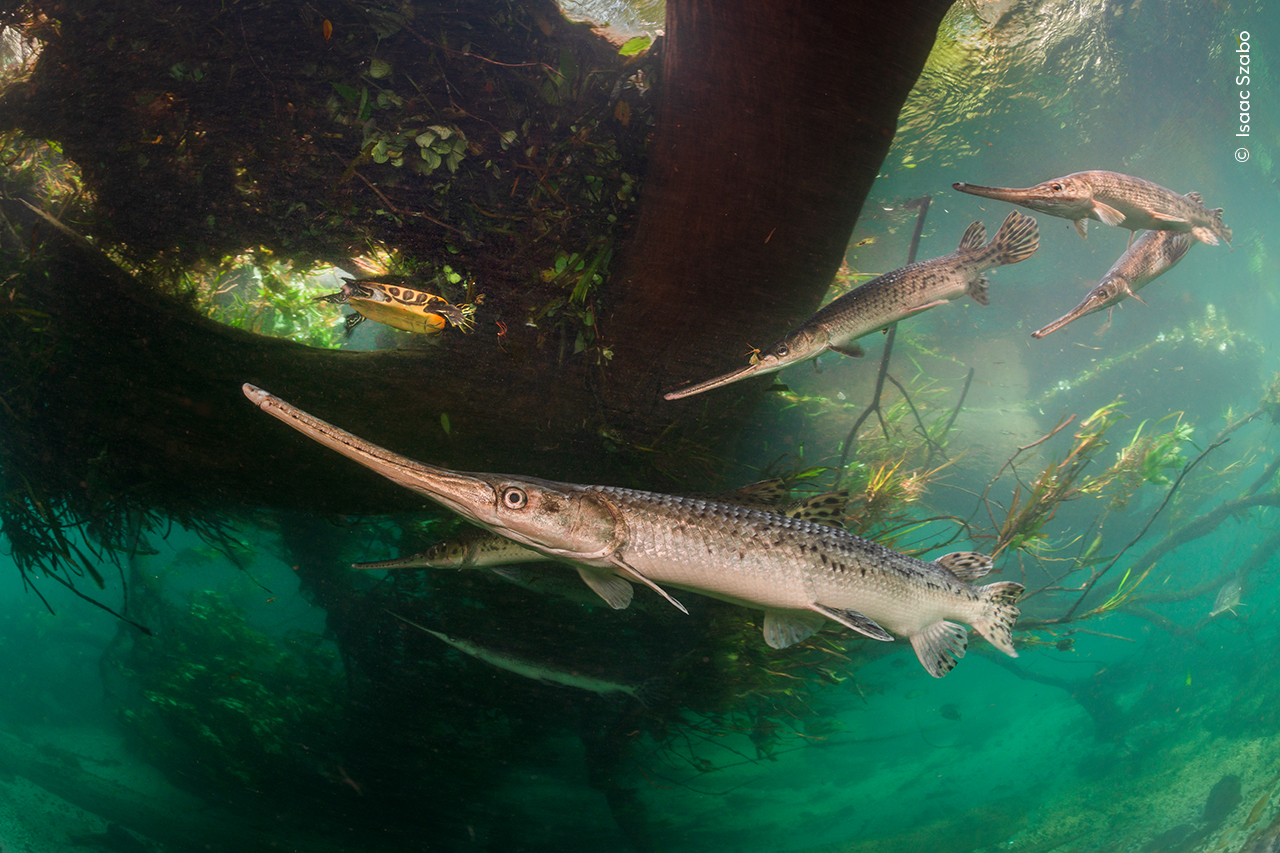
Fragile River of Life by Isaac Szabo, USA
Highly Commended, Wetlands: The Bigger Picture
Wrapping his feet around a drowned tree, Isaac photographed this female longnose gar with several males during the mating season. The presence of the turtle was, for Isaac, the ‘icing on the cake’, as it ‘gives a sense of the whole ecosystem’.
This river is one of more than 1,000 waterways fed by freshwater springs renowned for their clarity. Maintaining the aquifers that supply these springs is vital not only for iconic wildlife such as manatees, but also for providing drinking water to nearly half of Florida.
Location: Columbia County, Florida, USA
Technical details: Sony A7R II + Nikonos RS 13mm f/2.8 lens; 1/30 at f/8; ISO 200; Inon Z-240 strobes

Inside the Pack by Amit Eshel, Israel
Highly Commended, Animal Portraits
In temperatures of -35°C (-31°F), Amit struggled to fulfil his dream of photographing the elusive Arctic wolves of Ellesmere Island. But then, on the twelfth day of his second trip, they came closer than he had ever imagined, so close that he could smell their breath.
Restricted to Canada’s most northern territories and northern Greenland, Arctic wolves are curious of humans due to a lack of interaction. They’re a snow-white subspecies of the grey wolf, pack animals that hunt hares and musk oxen.
Location: Ellesmere Island, Nunavut, Canada
Technical details: Canon EOS R5 + 24–105mm f/4 lens; 1/1250 at f/11; ISO 2000
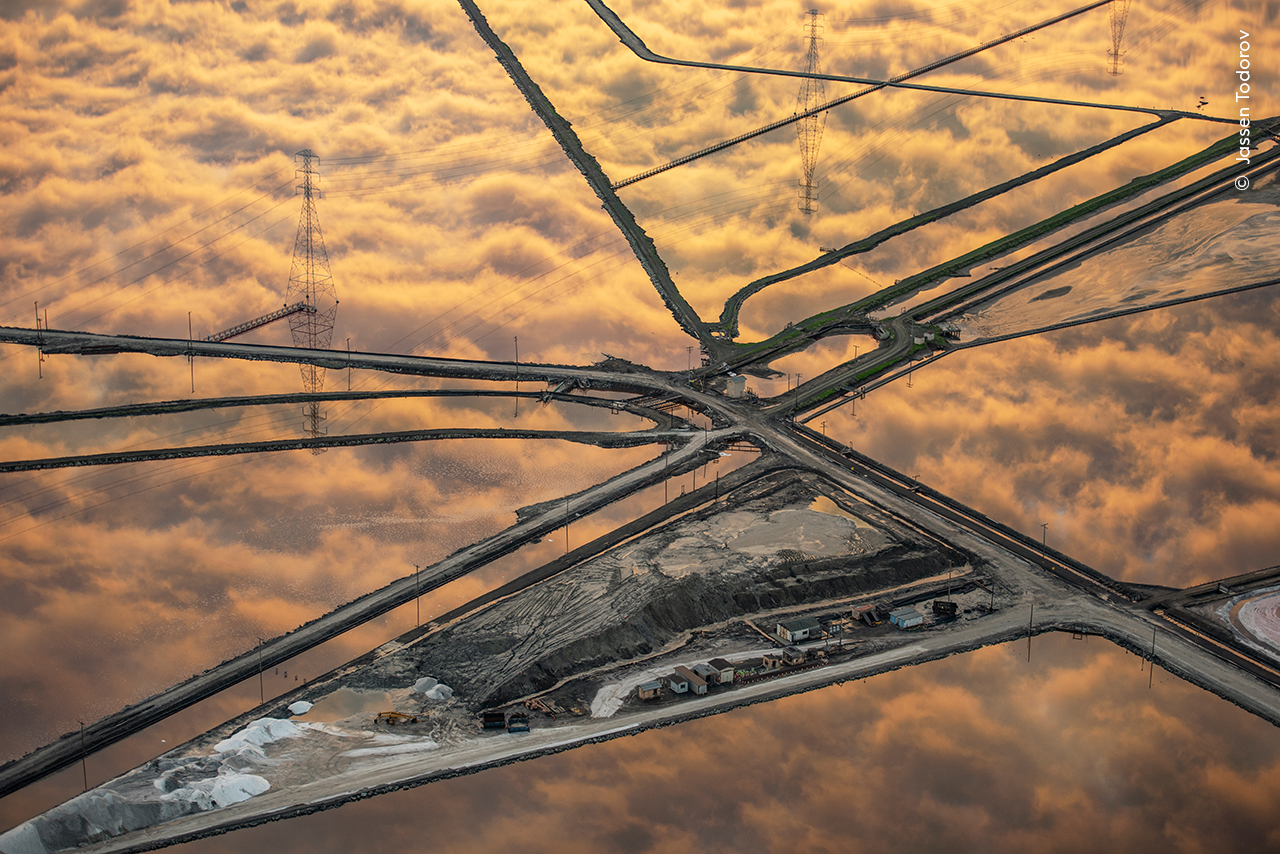
Clouds of Gold by Jassen Todorov, USA
Highly Commended, Wetlands: The Bigger Picture
Flying his single-engine Piper Warrior into San Francisco International Airport, Jassen never tires of the changing colours of the ponds. On this occasion, he says, ‘the light during the golden hour, at sunset, was magnificent’.
The process of salt collection in the bay was industrialised in the 1800s. Since 2003, the South Bay Salt Pond Restoration Project has acquired 6,000 hectares (nearly 15,000 acres). By removing artificial dykes, the project is recreating tidal marsh habitat, allowing salt-tolerant plants and wildlife to flourish once more.
Location: San Francisco Bay, California, USA
Technical details: Nikon D810 + 70–200mm f/2.8 lens at 70mm; 1/400 at f/2.8; ISO 280
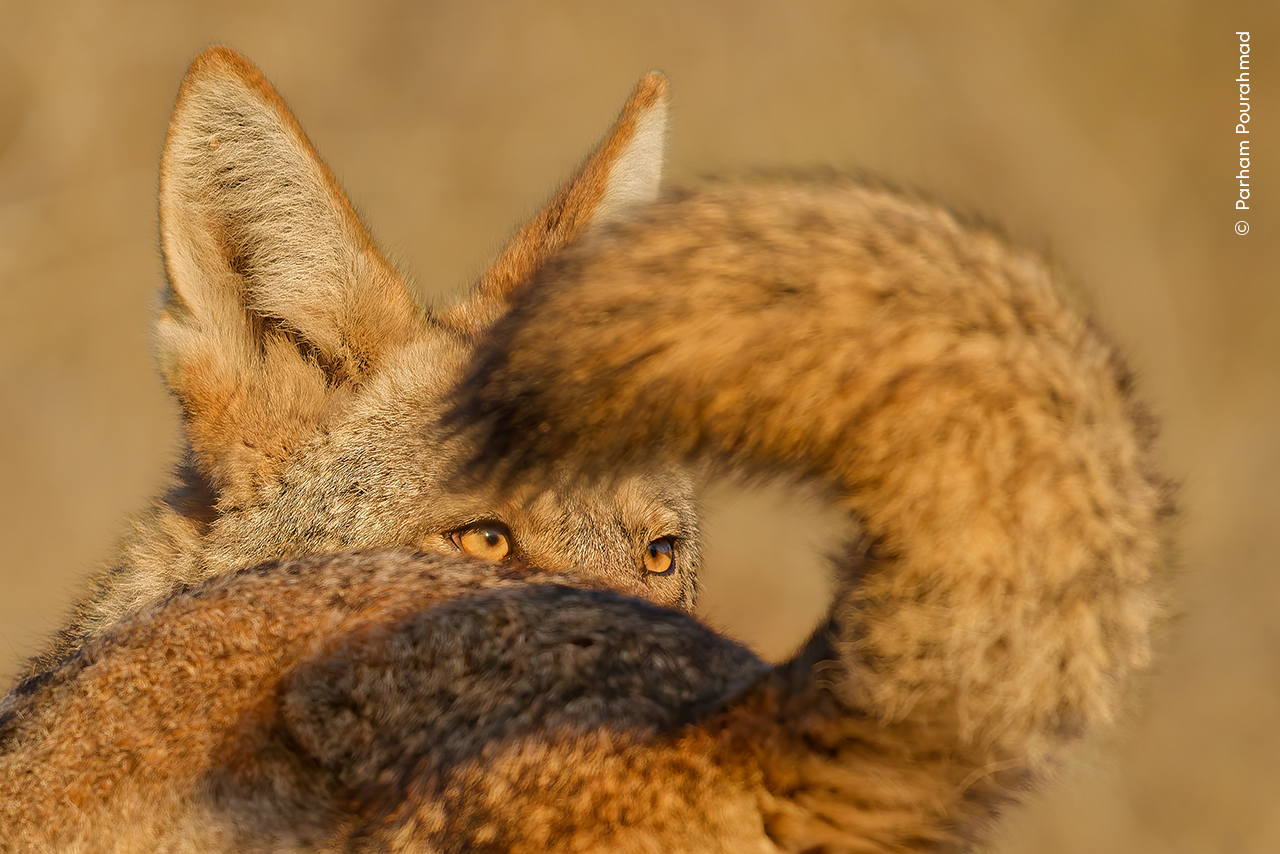
A Tale of Two Coyotes by Parham Pourahmad, USA
Highly Commended, 11 – 14 Years
Parham followed this pair – a female and possibly her brother – for a couple of hours across the rocky hillside, quickly framing his image before the male turned to nuzzle the female.
Coyotes can adapt to almost any habitat and are abundant across North America and into Central America. Once common in San Francisco, they had disappeared from the city but are now beginning to return. While they do scavenge food waste, their diet also includes rodents and other small mammals.
Location: Bernal Heights Park, California, USA
Technical details: Nikon Z8 + 180–600mm f/5.6–6.3 lens at 600mm; 1/1250 at f/6.3; ISO 800
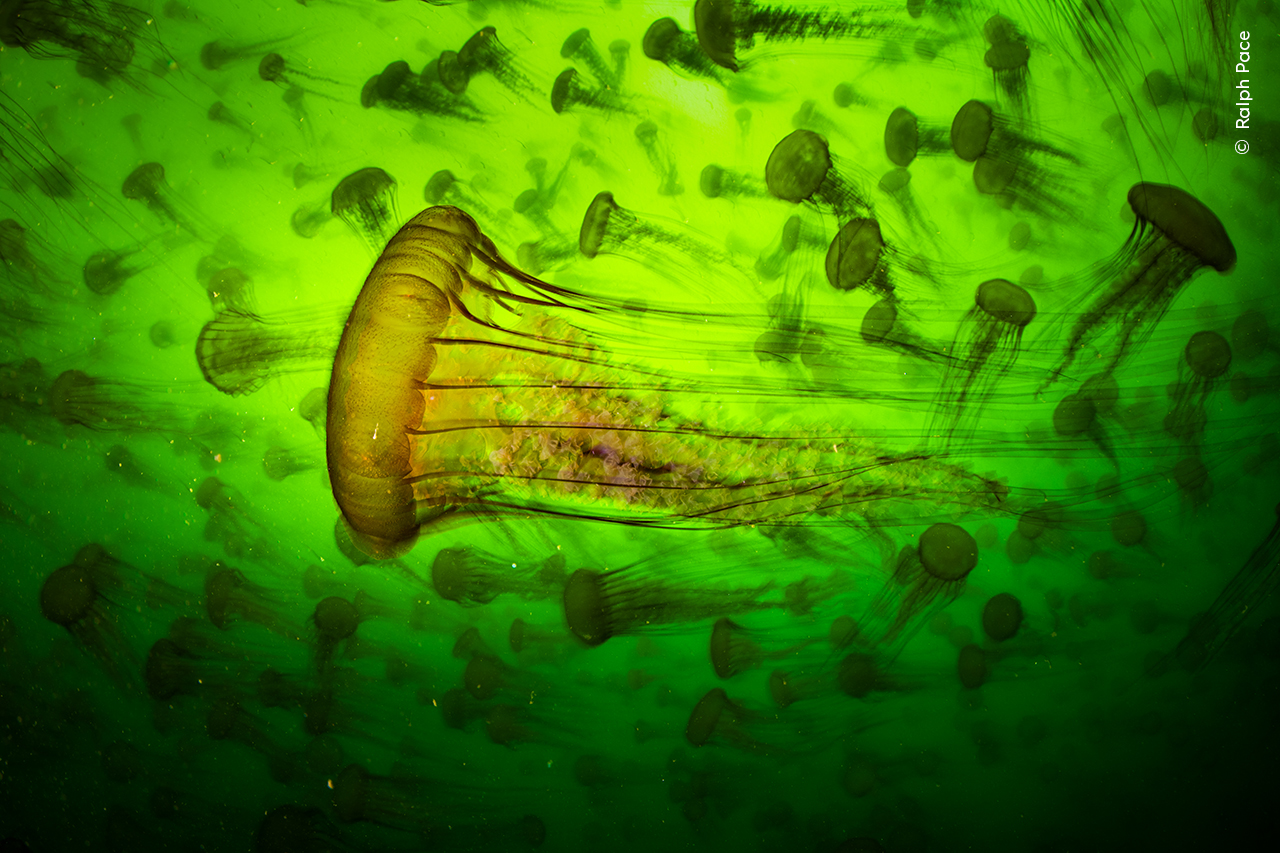
Jelly Smack Summer by Ralph Pace, USA
Highly Commended, Underwater
To try to protect himself from stings while taking this photograph, Ralph smeared petroleum jelly on any skin not covered by his wetsuit. The trailing tentacles can deliver a painful sting, which Ralph says feels more like that of a bee than a nettle.
Highly adaptable to warming seas, jellyfish are appearing in larger numbers. Some biologists argue that more frequent smacks are a sign of rising ocean temperatures. The removal of predators and competitors through overfishing is another contributing factor.
Location: Monterey Bay, California, USA
Technical details: Nikon D850 + 28–70mm f/3.5–4.5 lens; 1/5 at f/13; ISO 125; Nauticam housing; 2x Sea & Sea strobes
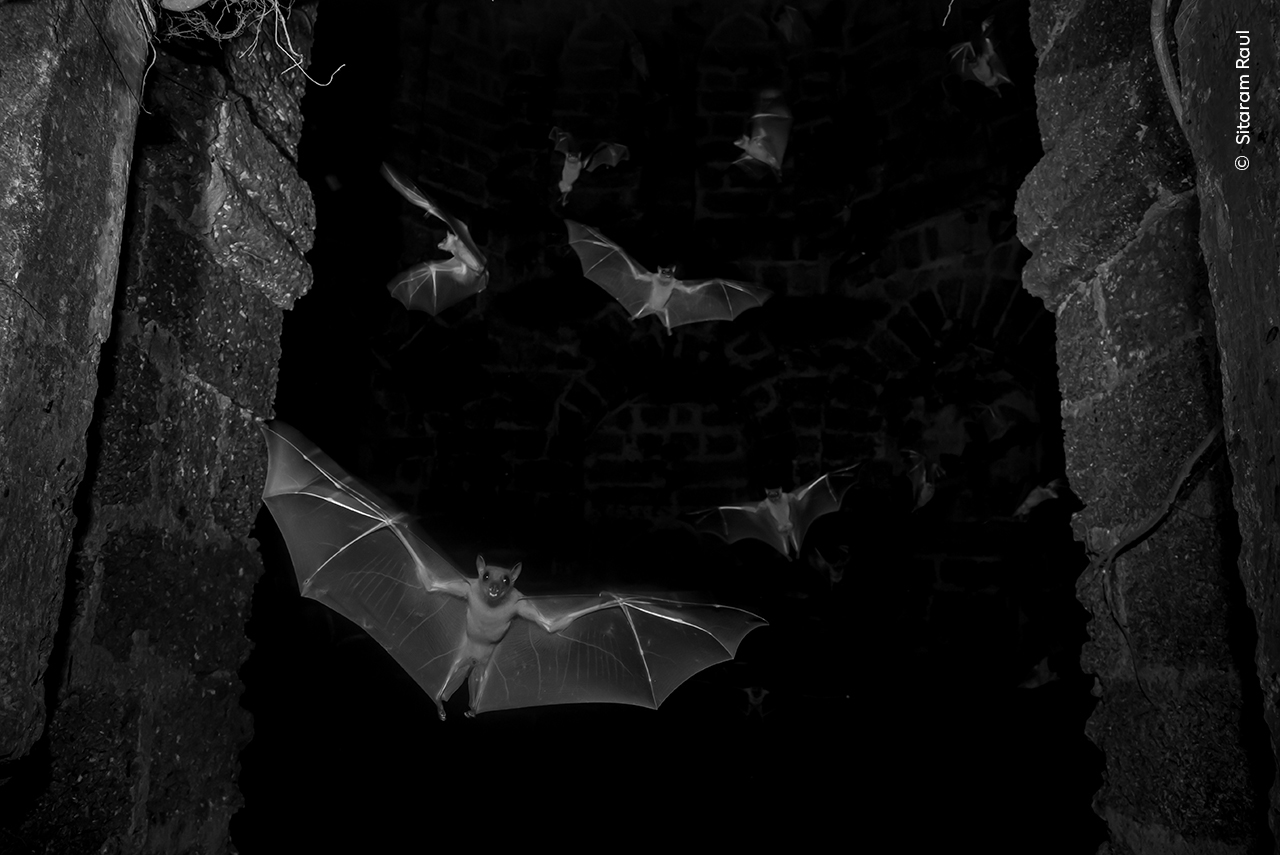
Nature Reclaims Its Space by Sitaram Raul, India
Highly Commended, Urban Wildlife
Working in total darkness, Sitaram manually focused his lens at the distance where he guessed the bats might appear, relying on his flash to illuminate the scene. All the while, bats were, in his words, ‘randomly pooping on me and the camera’.
Old World fruit bats are common across southern Asia. During the day, they roost in cavities such as hollow trees, caves and deserted buildings. Sitaram says that no matter how big our urban structures are, once we leave them, ‘eventually nature reclaims its space’.
Location: Banda, Maharashtra, India
Technical details: Nikon D750 + 24–120mm f/4 lens; 1/250 at f/8; ISO 800; Godox TT685 flash
You might like...
Browse the best cameras for wildlife photography, best trail cameras, and best lenses for bird photography and wildlife.
Looking for competitions to enter? Here are 10 global photo contests now open from August to January.

Kim is a photographer, editor and writer with work published internationally. She holds a Master's degree in Photography and Media and was formerly Technique Editor at Digital Photographer, focusing on the art and science of photography. Blending technical expertise with visual insight, Kim explores photography's time-honored yet ever-evolving role in culture. Through her features, tutorials, and gear reviews, she aims to encourage readers to explore the medium more deeply and embrace its full creative potential.
You must confirm your public display name before commenting
Please logout and then login again, you will then be prompted to enter your display name.
